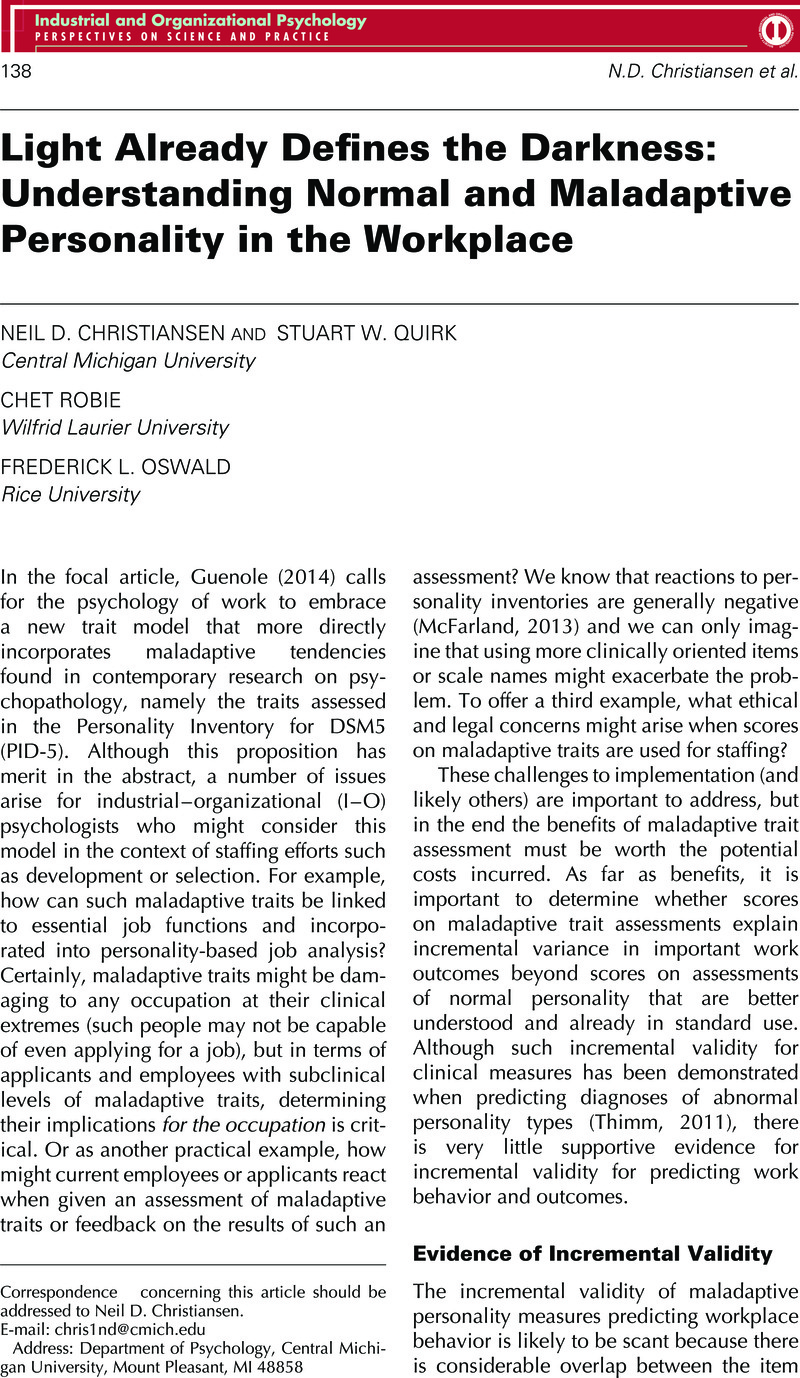Crossref Citations
This article has been cited by the following publications. This list is generated based on data provided by Crossref.
Schyns, Birgit
2015.
Dark Personality in the Workplace: Introduction to the Special Issue.
Applied Psychology,
Vol. 64,
Issue. 1,
p.
1.
Woo, Sang Eun
Chae, Minwoo
Jebb, Andrew T.
and
Kim, Yongdai
2016.
A Closer Look at the Personality-Turnover Relationship.
Journal of Management,
Vol. 42,
Issue. 2,
p.
357.
Wiens, Thomas K.
and
Walker, Lawrence J.
2019.
Examining the relationship between bright and dark personality traits in two management samples.
Personality and Individual Differences,
Vol. 141,
Issue. ,
p.
92.



